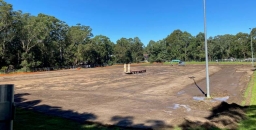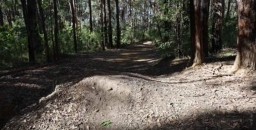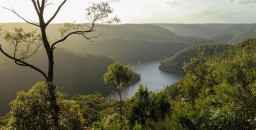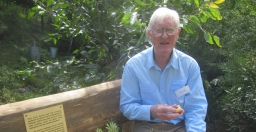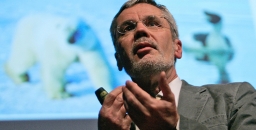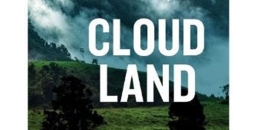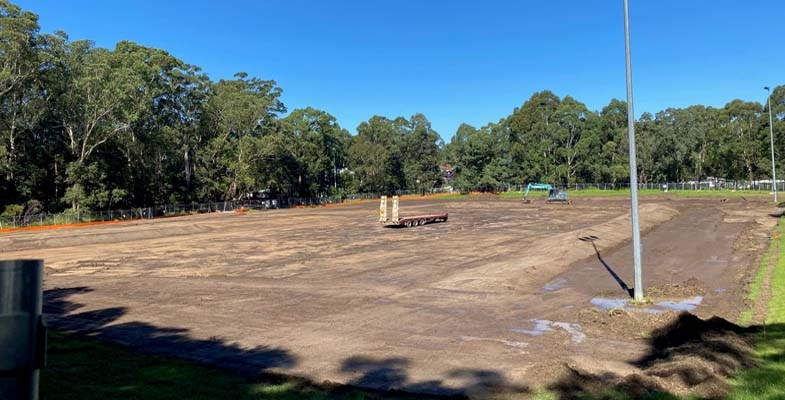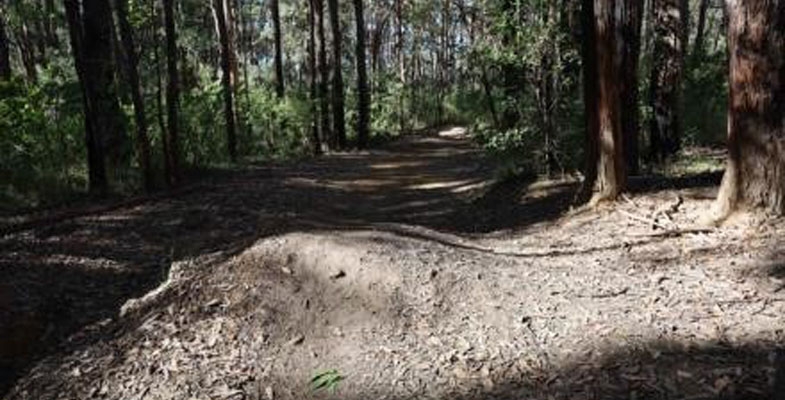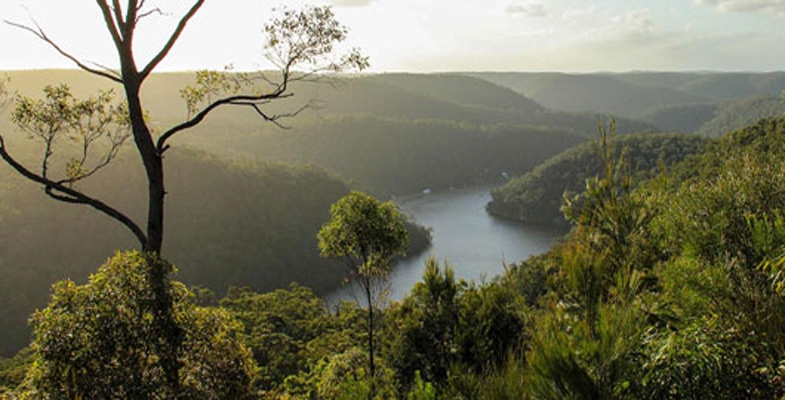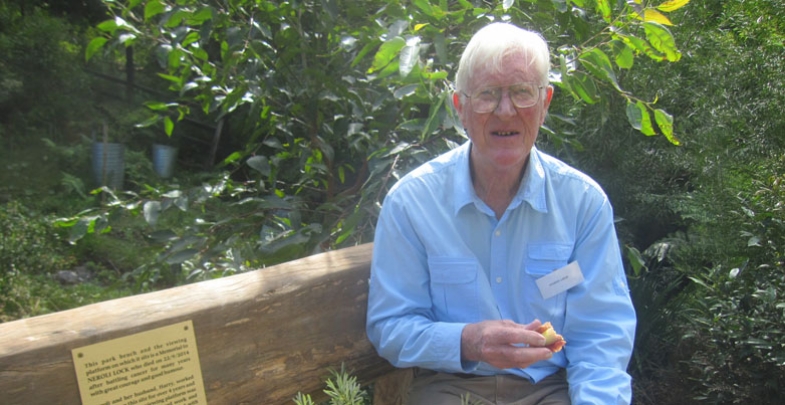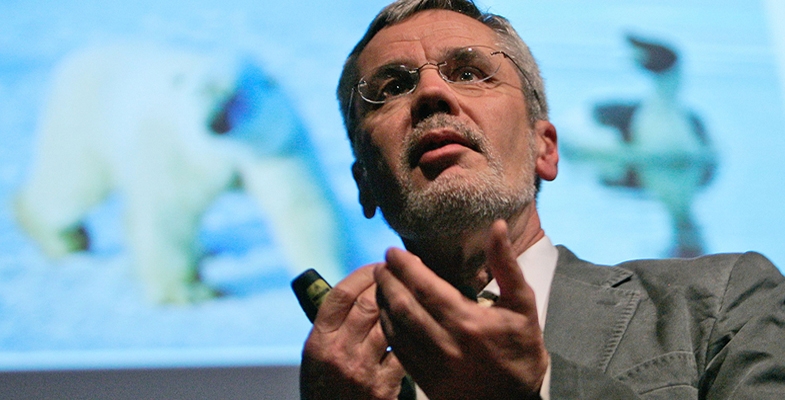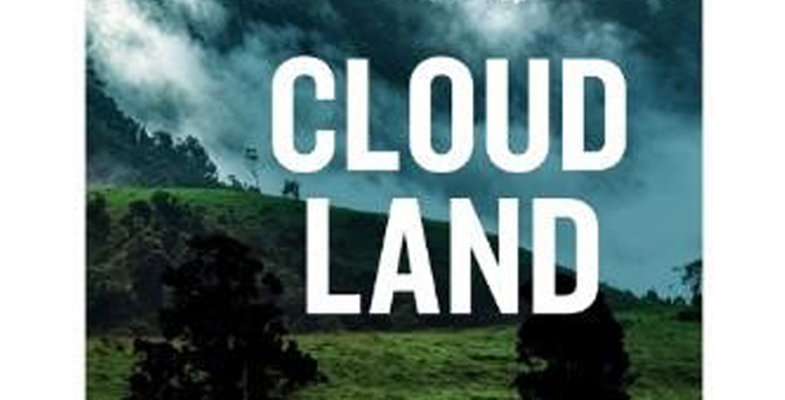STEP Matters 220
- Default
- Title
- Date
- Random
- At the time of finalising an article for our last issue of STEP Matters we were still waiting for the…Read More
- In Issues 217 and 219 of STEP Matters there was some information about the proposals for development by Hornsby Council…Read More
- The draft Berowra Valley National Park and Berowra Valley Regional Park Plan of Management was exhibited for public comment way…Read More
- The Centre for Population, part of federal Treasury, was established in 2019 to improve data collection on how Australia’s population…Read More
- We have been part of Ku-ring-gai Council’s microbat surveys for some time as part of the Pool to Pond program.…Read More
- The Albanese government has passed revisions to the Safeguard Mechanism legislation with the help of the Greens in the Senate.…Read More
- STEP members were sad to hear about the death of Harry Locke in February. Harry and his wife Neroli were…Read More
- One of Australia’s leading climate scientists, Prof Will Steffen, died in January. Steffen has been hailed as a brilliant climate…Read More
- Ever heard of Stockwellia? No? Well actually me neither, till reading this book! Stockwellia quadrifida is a rainforest giant found…Read More
Norman Griffiths synthetic turf – bad PR by Ku-ring-gai Council again!
At the time of finalising an article for our last issue of STEP Matters we were still waiting for the review of environment factors (REF) for council’s project to install synthetic turf at Norman Griffiths Oval in West Pymble. This was to be the major document giving details of the stormwater mitigation works and the design specifications of the field together with the management of identified environmental risks. The details of the design had not been made available previously.
By the time this happened on 27 February there was suddenly a great urgency to get started on the project. The public was given only two weeks to review the 72 page document plus 15 appendices and seek answers to questions. The bulldozers were due to start work on 13 March.
The local stakeholder groups wanting details about the project had been told that they would have four to six weeks to review the REF. So there were many representations made demanding that there should be more time. After all, the mayor had signed the documents giving the go ahead in November 2021 while the council was in caretaker mode before the election. Council had taken 15 months to produce the report so why the rush? Was it something to do with a time limit on the payment of grants of about $1 million promised by the NSW government?
Council decided to hold an Extraordinary General Meeting to discuss the project and provided for a further opportunity for submissions at a public forum on 14 March. Council was not swayed by the arguments that more time had been granted even though we had written evidence of this commitment.
The Extraordinary General Meeting was a farce. They simply presented a resolution that the REF be noted and received. The issues raised at the public forum were treated as unimportant.
One issue was the lack of consultation with NPWS that is required as runoff from the field will end up in Lane Cove National Park via Quarry Creek. NPWS was given the same short period to review the REF. The only commitment by council with NPWS is for continuing consultation in relation to any issues that may emerge.
This is just another example of the disregard council staff have for community concerns. Similar attitudes were experienced with the St Ives Showground Plan of Management where consultation occurred after decisions had already been made.
Once the field is in use and the tonnes of cork infill are in place, the amount of infill migration off the field with regular use or heavy rain will be a watched closely. Water quality is being regularly monitored via the Streamwatch program.
The picture at the top of the page shows Norman Griffiths Oval on 15 April 2023.
Westleigh Park development
In Issues 217 and 219 of STEP Matters there was some information about the proposals for development by Hornsby Council of the land known as Westleigh Park.
The Save Westleigh Park group has been engaging with the local community explaining the draft plans that have been put out for consultation. Very few locals are aware of this significant development. It is very disappointing that council has not even put up signs in the local shopping centre to alert the locals. This development will have major impacts as there is currently only one road providing access to this major sporting complex with three fields. Does council expect people to be constantly on social media looking for local news?
The draft Master Plan and Plan of Management were approved for exhibition by councillors at the 8 March meeting. Four weeks was provided for submissions with closing date of 9 April for the draft Master Plan and 23 April for the Plan of Management.
Mountain bike trails to remain in the endangered forests
The biggest bone of contention has always been the illegal mountain bike trails in the large bushland area that totals 26 ha. This bushland includes areas of critically endangered Sydney Turpentine Ironbark Forest (STIF) and endangered Duffys Forest, totalling 9 ha plus several threatened species in other areas. The trails were built by the mountain bikers while the land was owned by Sydney Water and have been expanded since. They have named the complex network zigzagging through the bushland as H2O MTB Trails.
In 2021 council exhibited a preliminary master plan that proposed that most of the trails in the endangered forest be removed or relocated to the edges. Trails in the other bushland would remain and be upgraded to conform to industry standards. This caused an outraged reaction from the mountain bike community.
Council held a series of workshops to try to establish a consensus between the opposing groups of mountain bikers and local community and conservation groups. This was never going to happen. We waited with bated breath to see the final proposals that Council would come up with.
No doubt there was much lobbying going on behind the scenes. The conservationists group, now called Save Westleigh Park, were horrified to see that council was proposing to retain some of the trails and even build some new ones in the endangered forest areas. A specialist trail building company had been brought in to advise on a network that would be a ‘good experience’ and cover a range of abilities from beginner to advanced.
The total length of trails would be reduced from 9.5 to 7.3 km. The trails in STIF would be reduced from 2.45 to 0.96 km and in Duffys Forest from 1.9 to 1.5 km. However some of these trails would be new so more damage to the bushland, including the endangered forests, would be incurred.
The continuation of trails in the endangered ecological communities goes against all the principles of conservation. Council claims they are observing the Biodiversity Conservation Act hierarchy of avoid, minimise and mitigate, but they will have to resort to the last stage and try to find offsets for the loss of integrity of the forests. The STIF is critically endangered which means the forest is on the brink of extinction. There are only small areas left so suitable offsets are not available and the net effect will be a loss of healthy STIF.
Not only will the trails remain in the forest but the general public will be excluded from their use. The only consolation is a walking track that is only 150 m long plus a shared path around the boundary between the bushland and the sporting fields.
The Master Plan also does not specify when and how council will close down the trails that are to be removed and undertake the rehabilitation to undo the damage already done.
Risks to endangered ecological communities
STEP’s submission on the Master Plan focussed on the risks posed by the building and use of bikes through endangered ecological communities that threaten their survival. These include:
- disruption of pollination
- soil compaction that damages fungal diversity and spore dispersal
- edge effects that change growing conditions such as light, humidity and wind
- introduction of pathogens
By allowing these trails to continue council is evading its responsibilities under the Biodiversity Conservation Act to protect these forests.
Other issues
There are other concerns about the Master Plan many of them related to the plans to squeeze three sporting fields into the cleared areas.
The draft Plan suggests that the middle sporting field that is designed for soccer could be synthetic grass. This is highly inappropriate for an area so close to the bushland.
It is also proposed to build a link trail through the Dog Pound Creek biobanking site to the Hornsby Quarry site. This area is another critically endangered ecological community and a biobanking site. It must be protected from pathogens that could be introduced by the movement of bicycles. There is already evidence of Phytophera infestation. It is intended to close this link from use by walkers so they will lose the experience of a spectacular area of Blue Gum Diatreme Forest.
The whole development is large enough to cater for regional needs, not just local needs. Hornsby Council has received a large grant ($40 million) but this is not sufficient to cover the huge cost of the project. Rate payers will be covering much of the cost.
One major cost is the need to remove the contaminants such as asbestos and heavy metals that have arisen from the use of the site as a tip and fire-fighting training ground. These are to be localised and buried under concrete. Will this be effective? The fields will then need to be levelled which involves building up the south-west corner by 8.5 m.
Funding is not available for the whole project so it will be done in stages. The removal of the mountain bike trails in the endangered ecological communities and rehabilitation of the weed infested bushland should be a priority.
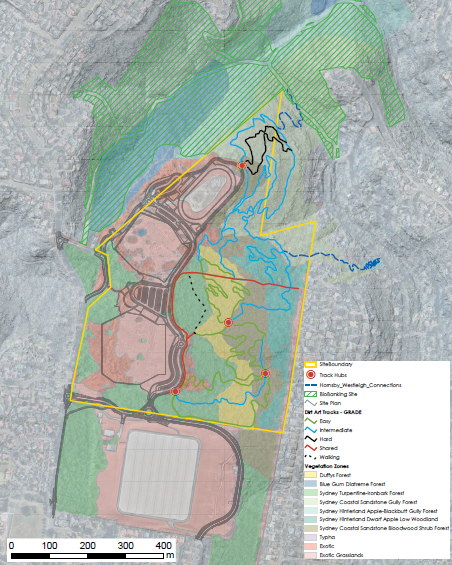
Plan of Management for Berowra Valley National and Regional Parks finally released
The draft Berowra Valley National Park and Berowra Valley Regional Park Plan of Management was exhibited for public comment way back in March 2015 and STEP spent a busy few months liaising, assembling data and writing our submission before close of submissions in July 2015. The final Plan of Management was adopted by the Minister for Environment and Heritage on 2 February 2023, an interval of eight years.
Our comments in 2015 focused on our two main concerns, the proposed sporting fields on the two open grassed areas of approximately 2 hectares in size to the east of Schofield Trail, Stringybark Ridge, Pennant Hills and the potential mountain bike options for the park.
Future of Stringybark Ridge
In the adopted Plan of Management, the provision of sporting facilities at Stringybark Ridge has not progressed, but it has been identified as a potential site for recreational, educational or cultural activities.
Other potential options for the site include camping areas to support use of the Great North Walk and/or an area for community group activities.
The management response is to prepare a precinct plan for Stringybark Ridge to examine opportunities for future use and vegetation restoration. Vehicle and public access arrangements for Stringybark Ridge will be determined as part of the precinct plan.
STEP will be keeping an eye out for the precinct plan as our objection to sporting facilities was not about the sports per se but about the possible ecological impact of development.
Undeveloped ridgetops are particularly rare and valuable in the valleys of the Lane Cove River and Berowra Creek, and we consider that the simple fact that it is a ridge makes Stringybark Ridge of conservation significance.
In 2015 STEP argued that the construction of sporting fields and mountain bike tracks would destroy the value of Stringybark Ridge as habitat and as a corridor. Stringybark Ridge is an integral part of the corridor from the Parramatta River to the Hawkesbury River as it the closest point to Lane Cove National Park. Nomadic and migratory fauna, as well as dispersing young, all need safe corridors for survival of the species.
Environmental impacts
We were concerned about the environmental impacts around the proposed sporting fields, issues that will be similar for any development:
- noise from traffic and sports will disrupt wildlife
- lights that will disrupt wildlife including the threatened Powerful Owl
- traffic causing road kill with significant risk for nocturnal animals, particularly the vulnerable Powerful Owl
- clearing for construction of the sporting fields, roads, parking and facilities will remove native plants and increase the possibility of weeds
- if the sports fields are grassed, impacts such as water runoff carrying nutrients will kill native plants and increase weed invasion into the bushland
- if the sports fields are covered in synthetic grass, then there will be no habitat for ground mammals such as bandicoots, wallabies, native bees and ground feeding birds such as magpies – it will be a desert in the centre of the national park
- fire management will be targeted at protection of life and property rather than protection of the biodiversity values
Social impacts
We were also concerned about the social impacts of the sporting fields:
- noise – this carries for long distances in bushland areas, e.g. the rifle range at Hornsby can be heard from Stringybark Ridge
- lights will be very visible from parts of Westleigh, Thornleigh, Pennant Hills and Cherrybrook – this is against the stated priority of protection of the high scenic quality of the ridgelines found within the planning area, particularly along the Great North Walk and from other vantage points within Berowra Valley National Park
- at present walkers can safely enter the planning area at the park gate – if the sporting fields go ahead, entry will be along a noisy and dangerous road
- a reduction in bushland quality caused by many factors, e.g. weeds and native vegetation being managed for asset protection rather than for biodiversity conservation
Mountain bike options
Mountain bikes were a concern in 2015 but Garigal National Park was chosen as the preferred option for mountain bike facilities. In 2015 the draft Plan of Management stated in Management Response 3.6.8:
Permit cycling on designated management trails and public roads and investigate future opportunities for mountain bike access in the region.
In the 2023 adopted plan, 3.6.8 has been altered to:
Investigate and enable, where appropriate, future opportunities for mountain bike access as part of ongoing discussions with stakeholders and other land managers regarding cross-tenure options across the northern Sydney region. Any new construction will be with a focus on linking cross-tenure mountain biking opportunities.
Cycling is permitted along designated management trails and public roads. Cycling is not permitted on walking tracks. The construction of unauthorised mountain bike tracks remains illegal.
According to management purposes and principles:
The primary purpose of national parks is to conserve nature and cultural heritage. Opportunities are provided for appropriate visitor use in a manner that does not damage conservation values.
Getting the balance between visitor use and conservation correct is always controversial.
Quality of the document
STEP has many criticisms of the quality of the documentation in the plan. The whole geology section needs to be re-written with a correct balance between geology, landscape and soil. The naming and detail of species is inconsistent. Fish and mangroves are completely overlooked despite them being such important ecosystems.
Population – big Australia back on the agenda
The Centre for Population, part of federal Treasury, was established in 2019 to improve data collection on how Australia’s population is changing and the implications of these changes.
The Centre makes an annual statement of population including analysis of changes over the past year. The 2022 statement has recently been released. This report also covers projections of future population levels out to 2033 as well as analysis of the impact of COVID on recent migration and mortality experience. It is good to see regular information in one location instead of previously having to delve into ABS and Department of Immigration website data.
This report brought out the usual hype in the media about the need for new migrants to stave off the ageing population burden and labour skill shortages. There is only limited discussion of the impact the growth will have on significant aspects of social and environmental wellbeing, such as cost of housing and biodiversity.
Projections for next 10 years
The baseline assumption of future net overseas migration (NOM) is 235,000 per annum based on the average over recent years prior to the COVID-19 slowdowns plus some adjustment for policies increasing permanent placements. Despite the COVID experience we are still trying to catch up on the demand for services and infrastructure that was generated by the escalation of growth that was started by the Howard government in 2006 and has been perpetuated by subsequent Labor and Coalition governments ever since. Prior to 2006 NOM was half that level or less.
Our current population is 26.1 million (as at September 2022). The projection in the Population Statement 2022 is that we will reach 30 million by mid-2033. However, the level of migration has been ramped up since the Labor government came to power as a backlog of applications is being processed and international students are flooding back. It is estimated that the NOM for the next two years will be 650,000 so that growth including natural increase (births less deaths) will approach 950,000. No wonder there is a housing crisis! The slowdown during the COVID-19 shutdown is becoming irrelevant.
Intergenerational report — projections to 2060
The 2021 Intergenerational Report provides longer term projections of the outlook for the economy and budget.
This report used the same assumption for NOM of 235,000 pa for the whole 40 years of their projections. The total population in 40 years’ time is projected to be an eye-watering 39 million. That is a 13 million more people, a 50% increase! The growth over the past 40 years was 11 million. We can see the impact of that number. To use the hackneyed catch phrase, it is unsustainable. Liveability of our cities has declined. The State of the Environment Report 2021 showed significant declines in biodiversity. Surveys have highlighted that citizens do not want this high rate of growth to continue.
The governments at state and federal level express plans to stop species extinctions, reduce carbon emissions and improve liveability but they carry on, regardless of popular opinion, doing nothing to stop the forces that go against these policies; vegetation clearing, bigger houses, more roads.
Apparently, there is no contemplation that our growth will ever slow down. The concept of longer term planning whereby the growth can be reduced over time is anathema to the politicians and business even though it would be welcomed by voters. We have to accept the reality of adapting by increasing skill levels, retraining the existing workforce and increasing workforce participation into retirement age. The easy option is still being taken by importing skills from countries that need them more. The hard decisions are being left to future generations.
Alternative viewpoints
Sustainable Population Australia, an environmental advocacy organisation, has recently published some discussion papers with academic analysis calling into question the status quo.
The housing crisis is a population growth crisis
Some of the key points made are:
- The connection between population growth – driven by high immigration – and high housing cost inflation is often ignored or denied in political circles but is accepted as an undeniable fact by almost everyone knowledgeable about the property industry.
- An accumulation of ill-advised policy measures (e.g. negative gearing, reduction in capital gains tax and first home buyer grants) have combined with accelerated population growth to create a perfect housing storm.
- A lower net migration level is needed to slow growth and stabilise population size. Even an optimally regulated market will not prevent housing inflation in the face of endless population growth.
- Lower, well-targeted immigration will not cause intractable skills shortages or unmanageable population ageing, but will reduce housing stress and inequality, and improve environmental amenity.
How many Australians? The need for Earth-centric ethics
This discussion paper has been written by Dr Paul Collins, an historian, broadcaster and the author of 17 books on Catholicism, the papacy, environmental ethics and population issues.
The paper addresses the competing demands of human beings seeking a better life with the rights of our natural systems to prevail against the demands of human activities.
Despite its physical size, Australia is limited in biophysical and geophysical terms. All our State of Environment reports have found the demands of the current population have been degrading natural systems irreversibly. We are not living sustainably with the numbers we have at current standards of living.
Millions want to come and share the riches we enjoy. Do we have a moral duty to let them come and allow them a better life? Or should we protect the ecosystems in our care?
He calls for a totally new moral principle to guide and govern our ethical behaviour as a species. He argues that we must shift our ethics away from anthropocentrism and economism which pays no heed to our dependence on the natural world. Instead, moral decision-making must give priority to the Earth, biodiversity, climate stability and the integrity of natural systems.
Microbats alive and well in South Turramurra
We have been part of Ku-ring-gai Council’s microbat surveys for some time as part of the Pool to Pond program.
Our recent report noted that the water quality in our pond in Kingsford Avenue was excellent and that five species of microbats have been visiting our pond, one of the highest numbers recorded in Ku-ring-gai.
These include the three most common bats:
- Gould’s Wattled Bat (Chalinolobus gouldii) found at 41 sites
- Little Bent-winged Bat (Miniopterus australis) found at 33 sites and vulnerable
- Ride’s Free-tailed Bat (Ozimops ridei) found at 32 sites
as well as the more elusive Little Forest Bat (Vespadelus vulturnus) and the White-striped Freetail Bat (Austronomus australis) pictured above.
Seven species of microbats have been found across Ku-ring-gai. We are sure other STEP members will have contributed to the survey and the biodiversity of our area.
All this is very re-assuring in that Kingsford Avenue was where STEP began in 1978 and is still on the job!
Margaret and John Booth, have provided this good news story.
Safeguard mechanism – how effective will it be?
The Albanese government has passed revisions to the Safeguard Mechanism legislation with the help of the Greens in the Senate. This is a vital part of ensuring that Australia meets its commitment to reduce net greenhouse gas emissions by 43% relative to 2005 levels by 2030 and 100% by 2050. By ‘net emissions’ it is meant actual emissions less offsets.
Two of the main mechanisms for reducing greenhouse gas emissions have been the facilitation of adoption of renewable energy through the renewable energy target schemes and reducing demand through use of more efficient products such as LED lights and home insulation. Many industries have initiated emission reductions by using more efficient production methods.
The legislated government policy tools applied to industry have been the so-called Safeguard Mechanism and Emissions Reduction Fund. We have written before about the questioning of the effectiveness and integrity of the Emissions Reduction Fund in reducing carbon emissions through the creation of carbon offsets.
The Safeguard Mechanism was introduced by the Abbott government in 2016. It applied to larger companies that emitted more than 100,000 tonnes CO2 equivalent per annum; 215 companies came under the scheme that were producing 28% of Australia’s greenhouse gas emissions. The most significant are the big miners, cement and steel manufacturers.
The principle behind this mechanism was that limits would be applied to emissions. If they were exceeded, penalties could be imposed that were meant to be disincentives for exceeding the limits. However, under the Coalition Government, the Safeguard Mechanism has been a farce. National pollution ‘limits’, or company baselines, were set at levels that were way higher than the amount that companies were polluting. If these companies did happen to exceed the very high ‘limits’ that were set, the government of the day would often just let them set new ones anyway, without any penalty.
As a result the total emissions by the affected companies actually increased by 7% from June 2016 to June 2021. In 2020–21, aggregate baselines were set at 180 Mt CO2-e, compared with actual covered emissions of 137 Mt CO2-e.
Under the amended legislation the baseline for each company for 2023–24 year will be set at a level using a production based intensity standard. Beyond 1 July 2023, baselines for new facilities will generally be set in line with ‘international best practice, adapted for an Australian context’. This will also apply to existing facilities if they begin producing new products.
The baseline will be reduced by 5% each year in order to achieve the overall target of a 43% reduction on 2005 emission by 2030. Actually it is not that simple as there is some flexibility by using rolling averages. The total baseline is set in terms of the total emissions over the 10 years to 2030
Companies that reduce emissions below their baseline will receive credits, which they can sell to higher emitting companies. This will provide an incentive to adopt new technologies if they cost less than the price they will receive for the credits. If it is too costly to reduce emissions companies can buy credits within the scheme or offsets from an external source.
Companies cannot simply buy their way out using offsets. Where they rely on offsets to meet more than 30% of their emissions reductions requirements, they will be required to justify their reason for doing so to the Clean Energy Regulator.
Provision for new industries and mines
There is a defined hard cap on the total carbon pollution produced within the scheme, so that new or expanded projects cannot blow out plans to cut national emissions – particularly new coal and gas. If a new facility starts operating the overall baselines of the existing facilities may have to be reduced accordingly in order to maintain the total cap.
New coal and gas developments will have to be net zero for their direct scope one emissions, which means they will have to offset all pollution released in the production process, a step that makes it more expensive to get a project up. All new gas fields for liquefied natural gas export projects will also need to be net zero for CO2 emissions.
The requirement for net zero carbon, combined with the benchmark expectation that no more than 30% of emissions reductions be achieved through offsetting, suggests that carbon capture and storage is likely to be a significant element of the abatement solution for those oil and gas projects that do proceed. But this technology is still unproven.
Are offsets genuine reductions in emissions?
After much publicity questioning the integrity of the offsets scheme known as the Emissions Reduction Fund, the government commissioned an independent review by Ian Chubb, former Chief Scientist. The report released in January concluded the scheme is essentially sound. But key questions raised by a research team at ANU remain unaddressed.
While a carbon credit is meant to represent a reduction of one tonne of CO2, scientists say an offset created through forest regeneration is not equal to a tonne released from fossil fuels. The latter can persist in the atmosphere for hundreds of years. The former is much less likely to survive as long.
Vale Harry Locke
STEP members were sad to hear about the death of Harry Locke in February. Harry and his wife Neroli were key players in the fight to save both the Lane Cove Valley from the proposed freeway and a large area of Blue Gum Forest that is now part of the Dalrymple Hay Nature Reserve in St Ives.
They also transformed weedy bushland in South Wahroonga and were instrumental in trialling a new stormwater detention system on the edge of Lane Cove National Park. Also they were instrumental in rescuing the historic cobbled road at the end of Fox Valley Road from housing development.
For many years STEP’s Christmas barbeques were held just behind their house in Leuna Avenue amongst an array of native plantings.
Vale Will Steffen
One of Australia’s leading climate scientists, Prof Will Steffen, died in January. Steffen has been hailed as a brilliant climate thinker, selfless mentor and gifted communicator. His death is a great loss to climate science and understanding of earth systems.
Some of his friends and colleagues wrote about their relationship with Will in an article in The Conversation, published on 31 January.
Will joined the CSIRO as an editor and information officer but he was soon headhunted to the nascent International Geosphere Biosphere Program, an international consortium of scientists which aimed at understanding the physical, chemical and biological processes that regulate the whole Earth system. He eventually served as the IGBP’s executive director from 1998 to 2004.This was the early 1980s, when the field now known as Earth system science was just taking off.
Will was a visionary in many ways. He understood that the environmental problems we were trying to solve spanned many academic disciplines and were deeply interconnected. Few people had his ability to absorb so many diverse types of science and to work with the diverse research communities whose expertise was urgently needed as part of the solutions.
Will co-developed a number of influential ideas in sustainability science, such as:
- The planetary boundaries framework that shows us that the environment is not boundless and elastic and able to absorb all that we throw at it or take from it. Our planet has limits – and if we push too far, we will break something, leading to dramatic changes to the planet.
- The concept of the Great Acceleration which describes the dramatic increase in human environmental impact since the 1950s, brought about by population growth and fossil-fuel burning.
- The concept of the Anthropocene (that the planet has entered a new geological epoch because of human activity).
Viewing the world in this way helps us understand what we have done to our environment – and how to begin fixing the problems.
In 2011, he was appointed to the Australian government’s Climate Commission, which was dedicated to deepening public understanding of climate change and its impacts. When commission was abolished by Tony Abbott in 2013, Steffen co-founded the Climate Council of Australia to continue the work, funded by public donations. They raised $1 million in a week! Will authored, reviewed and publicly launched numerous reports that clearly explained to the public the risks and dangers of climate change.
Will Steffen epitomised the ethos of a social contract between scientist and society in his pursuit and sharing of knowledge relevant to the grand challenge of climate change. His visionary academic publications represent a track record of which any scientist would be proud, but his even greater legacy is the thousands of people he educated and inspired to work for a better future. From Nature 615, 29 (2023)
Cloud Land: The dramatic story of Australia’s extraordinary rainforest people and country
Ever heard of Stockwellia? No? Well actually me neither, till reading this book! Stockwellia quadrifida is a rainforest giant found in groves high on the slopes of Mt Bartle Frere, North Queensland, but it’s much more than that: it's of family Myrtaceae and actually an ancestral eucalypt, regarded as potentially one of the source genera that evolved into the vast numbers of Eucalyptus, Corymbia and Angophora species that spread across our huge continent from tens of millions of years ago. But even beyond this tree, the ancient lineages preserved in the wet tropics rainforest floras are a wonder and globally unique dating back to the evolution of flowering plants and beyond.
Stockwellia is but one of the many information gems in this book, which starts by tracking the evolution of the wet tropics from their geological past through the waxing and waning of rainforest and dry savannas, and then the First Nations rainforest people in harmony with the landscape. But then came the destructive invasion of European settlers. The latter is carried by a disturbing series of chapters that necessitate a strong drink before reading – these have the potential to make one deeply ashamed of one's country’s past.
Understanding such settlement dates back to the Britain I grew up in, where of course most of the settlers came from. There was a book by W.G. Hoskins titled The Making of the English Landscape that led to a widely acclaimed BBC TV series. My parents watched it and told me they were astonished to learn that the English landscape is largely man made: the farmlands, fields and surviving forest copses were modelled by man, dating from back in the Bronze Age. The loss of trees in Britain has been such that only 12% forest cover survives, the second lowest in Europe after Malta, and much is not native.
The highland and lowland forests of Queensland's wet tropics met a British pastoral landscape fate, only protected where growing on steep, rugged terrain, and not even there if red cedars grew – these were cut and dragged to be floated down rivers like the Barron (where the majority were smashed to pieces on the 230 metre high Barron Falls!).
Unmanaged forestry and land clearing continued right through the 19th and 20th centuries; amplified by certain governments that I don’t need to name. Development ran right up to the Daintree, where of course environmental protest became a global news item – ‘get them out of the way’, ‘they’re not fair dinkum’ and ‘we must build our road’!
So where does the author come in – well Penny van Oosterzee is an adjunct prof at James Cook Uni, has been an environmental consultant and is a multiple award winner with many books published. She and her family bought a large tract of remnant rainforest and pasture called Thiaki, not far south of Malanda. Based on vast amounts of research and local knowledge dating back to First Nations forest practice, they began to restore the areas of cleared pasture. From the photos in the book they’ve been highly successful, but there’s a long road still to travel, and vastly more restoration investment is needed across the region. World Heritage listing was a huge step forward but the challenges in the face of climate change and other obstacles such as government and public ignorance and disinterest are huge.
Penny van Oosterzee, Allen & Unwin, 2023; 312 pp
Reviewed by John Martyn

